
The Country has all the prerequisites including but not limited to perfect location, large talented and resilient population, hardworking labour force, unexplored natural resources and a modern outlook on life.
By Ambassador Naghmana A. Hashmi
“God has given us a grand opportunity to show our worth as architects of a new State; let it not be said that we did not prove equal to the task.” Quaid’s address to Civil, Military and Air Force Officers, 11 October, 1947.
Pakistan, the dream of Allama Iqbal, the result of tireless efforts and visionary leadership of Muhammad Ali Jinnah and sacrifices of millions of Muslims came into existence on 14 August 1947, which also coincided with 27th of Ramazan.
Named by Chaudhry Rehmat Ali, Pakistan the land of the pure, represented the dreams and aspirations of the Muslims and the minorities living in East and West Pakistan and the cherished land for the millions who left all their worldly possessions and migrated to Pakistan. It was the largest and first Muslim country created on ideological basis and thus, looked upon as the leader of the Muslim world. In terms of population it was also the third largest country in 1947 and in terms of the area the 6th largest.
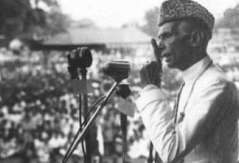
There is still time to put our beloved country back on track by following the vision and laid down by Quaid-e-Azam Muhammad Ali Jinnah, the founding father of the nation.
In 1947, Pakistan consisted of West and East Pakistan separated by over 1000 km of Indian Territory. Quaid-i-Azam Muhammad Ali Jinnah became Governor-General while Liaquat Ali Khan as the first Prime Minister thus laying the foundation of parliamentary form of democracy and with the lofty motto of which the Quaid instructed, “Never forget the motto Unity Faith and Discipline.” Speech from Radio Pakistan, Lahore, 30 October, 1947.
The motto was to be the beacon of light guiding the nation towards peace and socio-economic development. The Quaid said, “Democracy is in the blood of Musalmans who look upon complete equality of manhood, Musalmans believe in fraternity, equality and liberty.” Speech at Kingsway Hall, London, 13 December, 1946.
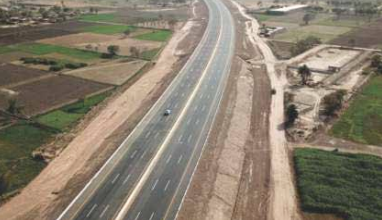
The Quaids vision and expectations for the development of Pakistan were clear from the beginning that is from the time the Pakistan Resolution was passed in Lahore on 23rd March 1940. “There are millions and millions of our people who hardly get one meal a day. Is this civilization? Is this the aim of Pakistan? Do you visualize that millions have been exploited and cannot get one meal a day! If that is the idea of Pakistan. I would not have it.” Presidential Address Delivered at the Thirtieth Session of All-India Muslim Leauge, 24 April, 1943.
The Quaid knew the value of hard work and knowledge. His sagacious advice was to, “Work, work and work and we are bound to success.” Speech from Radio Pakistan, Lahore 30 October 1947. Again in 1948 he reiterated, “Develop a sound sense of discipline, character, initiative and a solid academic background. You must devote yourself wholeheartedly to your studies, for that is your first obligation to yourselves, your parents and to the State. You must learn to obey, for only then you can learn to command.” Reply to the Address Presented by Islamia College Students, Peshawar, 12 April, 1948.

In the initial decades, the predictions made by the international institutions, including the World Bank were extremely positive who saw a bright and prosperous future for Pakistan. These expectations were based on the fact that Pakistan had an ideal location both for East and West Pakistan, large educated, English speaking and industrious population, huge natural resources, fertile and integrated agriculture with the largest canal network in the world, a fast growing middle class and good speed of industrialization and capable and strong armed forces.
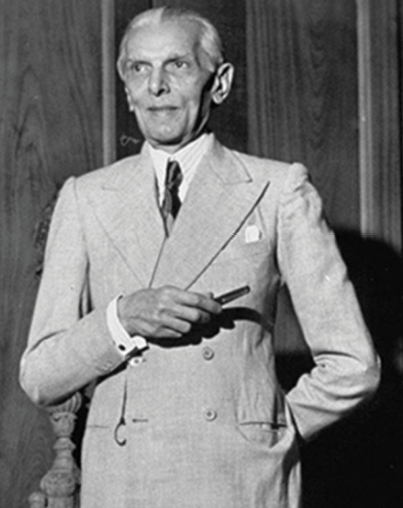
The new country on the world map, under the sagacious leadership of its founding father thus looked set to carve a niche for itself in the comity of nations. In 1979 economically speaking, Pakistan was at a takeoff stage but was stopped in its tracks by the Soviet invasion of Afghanistan that created immense geo-political and geo-economic instability which unfortunately persists to date.
Pakistan has come a long way since its creation in 1947 and it would be wrong to write it off.
Even before the creation of Pakistan the Quaid explaining the concept of the future state of Pakistan said, “Islam stands for justice, equality, fair play, toleration and even generosity to non-Muslims who may be under our protection. They are like brothers to us and would be the citizens of the State.” Address at the Muslim University Union, Aligarh, 2 November, 1941. He again reiterated, “Minorities can rest assured that their rights will be protected.
No civilized Government can be run successfully without giving minorities a complete sense of security and confidence. They must be made to feel that they have a hand in Government and to do this they must have adequate representation in it. (Interview to APA representative, Bombay, 8 November 1945.)
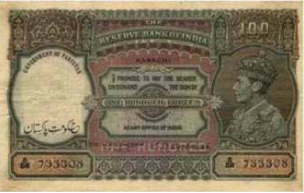
After the creation of Pakistan the Quaid categorically stated, “We are now all Pakistanis, not Balochis, Pathans, Sindhis, Bengalis, Punjabis and so on and as Pakistanis we must feel, behave and act, and we should be proud to be known as Pakistanis and nothing else.” Born as just “Pakistan”, it was envisaged by the founding fathers to be Muslim majority country but with equal rights and protection of the minorities. For building a strong Pakistan, Quaid ordered the nation to, “build up yourself into a nation. Give up this provincialism. Provincialism has been one of the curses; and so is sectionalism— Shia, Sunni, etc.” Public Address Dacca 21 March 1948
At the time of the creation of Pakistan, Quaid repeated, “You are free to go to your temples, you are free to go to your mosques or to any other place of worship in this state of Pakistan. You may belong to any religion or caste or creed that has nothing to do with the business of State.” Presidential Address to the Constituent Assembly of Pakistan 11 August, 1947.

The Quaid categorically stated that, “Pakistan is not going to be a theocratic State – to be ruled by priests with a divine mission. We have many non-Muslims – Hindus, Christians, and Parsis – but they are all Pakistanis. They will enjoy the same rights and privileges as any other citizens and will play their rightful part in the affairs of Pakistan.” This statement emphatically defines the orientation of a secular Pakistan with justice and welfare of all citizens guaranteed by law.
The Quaid was a great advocate for women empowerment and that of involving women in all aspects of nation building. “I have always maintained that no nation can ever be worthy of its existence that cannot take its women along with the men. No struggle can ever succeed without women participating side by side with men. There are two powers in the world; one is the sword and the other is the pen. There is a great competition and rivalry between the two. There is a third power stronger than both, that of the women. (Speech at Islamia College for women March 25, 1940.)
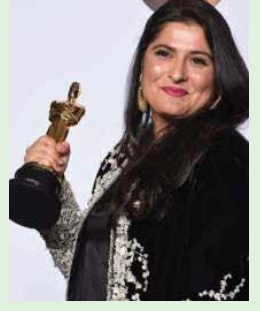
Now as we celebrate the 75th anniversary of the establishment of Pakistan and cherish the achievements and successes both at the national and international level- and there are many to be proud of, it is equally important to sit back and think why despite the clear road map, vision and instructions of the Quaid, what are the factors that have detracted us. Where have we violated the road map and the original vision?
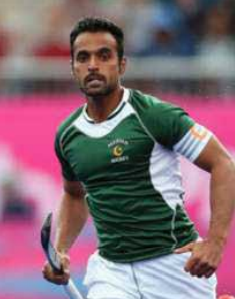
Where did we divert from the golden path enshrined in our motto “Unity Faith and Discipline”? Where did we lose our nationalism?
The first tragedy to strike Pakistan was the death of the Quaid just a year after the creation of Pakistan. To make matters worse the murder of the first Prime Minister, Liaqat Ali Khan under suspicious circumstances left the state rudderless and the hideous power struggle raised its head which to this day is flourishing and tarnishing the soul of Pakistan. The unfortunate death of the founding fathers in the early years complicated the situation with not only governance but also the economic and ideological orientation of the country.
The first decade saw a quick change of leadership and uncertain and confused political developments. In 1954 the word, “Republic” was added to the name, “Pakistan” and then The first Constitution of 1956 changed the name to “The Islamic Republic of Pakistan, thus altering the very ideological orientation from secular with the state having nothing to do with the religion of its citizens to religious.”
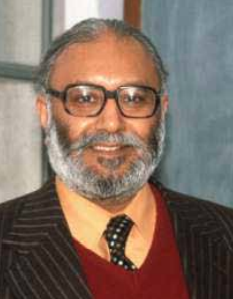
It is true that despite all the issues and impediments, Pakistan has innumerable assets and achievements that we must feel proud of.
Against the vision of the Quaid of a Pakistan where people of all faiths were to be treated equally this laid the foundation religious differences that have today become a cancer that is affecting the whole body. In 1962 we reverted back to the original name which is simply “Pakistan” only to once again become “The Islamic Republic of Pakistan” in the 1973 Constitution when Zulfiqar Ali Bhutto succumbed to the pressure of Islamist political parties.
The next to suffer was the Quaid’s clear conviction that the political orientation of the state would be democratic. Failed attempts to agree on a governance and development model and a workable constitution, led to military take over early in the formative years which continued at regular intervals not allowing democracy to mature and take roots or for the people to learn the attributes and rights and duties of citizenship and value of participatory or accountable democracy.
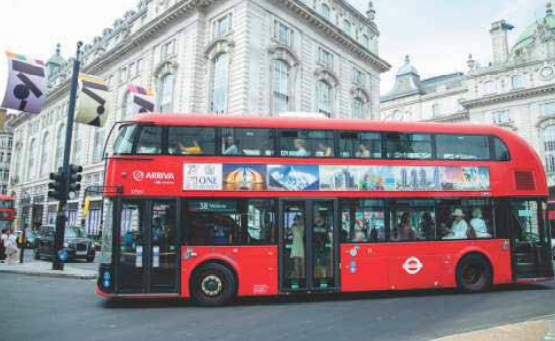
There is no contradicting the fact that it was the imminent threats to newly created Pakistan which obligated the early political leaders to invest heavily in defense to strengthen Pakistan’s military capabilities at the cost of other institutions. The military therefore, assumed immense importance right from inception and became a very strong institution playing a huge part in governance. Encouraged by this acceptability of the military in governance, General Ayub Khan grabbed power by imposing Martial Law in 1958. Since then Pakistan has seen this tendency of the military repeat itself at regular intervals in 1969, 1977 and 1999. Therefore, Pakistan is no stranger to military dictatorships with the army chiefs seizing political power and directly ruling the country for years. The indirect intervention of the military even in democratic governments is an open secret and by now an established practice. What is interesting is the tacit acceptance of this interference even by the fiercely democratic political parties in the country as faite accompli.
On the development and economic front as well we see a bleak picture. Today Pakistan finds itself burdened by huge external debt with low growth rate, stagnation of economic growth with macroeconomic imbalances and is faced with political and economic instability. Foreign exchange reserves have fallen sharply necessitating financial planners to take harsh and difficult decisions in order to qualify for availing of further loan facilities from international sources.
Today we have reached this unfortunate state despite the fact that Pakistan had maintained a sustained and fairly steady annual growth rate for a considerably long period. In 1947 Pakistan was a dominant underdeveloped agrarian economy, with a little share of services, manufacturing, and infrastructure, with millions of refuges from across the Eastern Border thronging into Pakistan a land that they has sacrifices enormously to create.
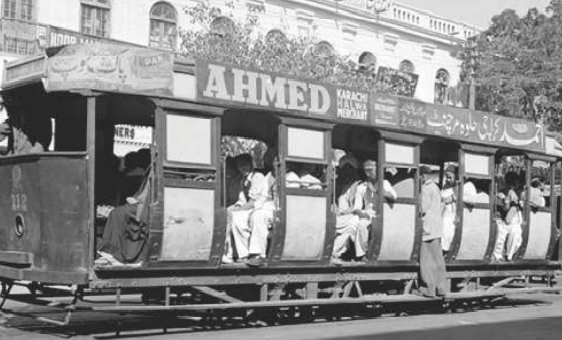
Therefore, it was not possible to attain very high level of growth in that period. Compared to this the economy has become considerably diversified. Agriculture, now no longer the largest sector, contributes roughly one-fifth of GDP, while manufacturing provides about one-sixth. Trade and services, which combined constitute the largest component of the economy, have grown considerably.
So how did we manage to scale down from being a high-growth, low inflation economy at the time of creation to now a low-growth, high inflation economy with stagnated economic growth. There is no single reason or a regime that can be held responsible for this pathetic state of affairs. Long-term structural problems and repeatedly poor economic decision making coupled with poor governance and hold of the country’s financial and political power concentrated in a sect elite since 1950s have all contributed to this catastrophe. Perhaps we are all, as a nation, responsible for this collective failure to ensure that Pakistan was securely put on the path of sustainable socio-economic development and secure the future of our coming generations.

Among other factors, there are six pivotal mistakes that Pakistan has made: a) poor economic planning, b) behaviour of economic, military and political elite c) huge loans facilities from IMF, d) huge gap in tax to GDP ratio at around 10% due to poor tax collection which is even less than the average for developing countries. It also leaves very significant chunks of the economy including agriculture income and urban land untaxed completely; this also has caused a recurring budget deficit, e) lack of FDI and f) political instability. All these factors are interconnected and Pakistan relies heavily on foreign exchange from exports and remittances both of those sources of revenue became unreliable in the case of global developments both political and economic and as most recently experienced by unforeseen pandemics and other disasters.
However, bleak the current situation may be, and irrespective of the political and economic crises we may have experienced, Pakistan has come a long way since its creation in 1947 and it would be wrong to write it off. It has all the prerequisites, perfect location, large talented and resilient population, hardworking labour force, unexplored natural resources and a modern outlook on life. We have seen spurts of economic development, largely due to the institution of 5-Year Development Plans by the First Prime Minister Liaquat Ali Khan and assiduously followed by Ayub Khan though it must be acknowledged that this era of rapid industrialization and development entailed large and repeated loans from international financial institutions and progress was achieved by concentrating wealth in the hands of a few large landlords and industrialists. The logic was that the wealth would trickle down and eventually benefit all, though sadly it never happened and the cartel of the elite further strengthened penetrating the political parties. Today Pakistan has become the only country with the largest number of World Bank loan facilities
Despite two major wars, loss of East Pakistan, continuous tension on the Eastern border and major political and military destabilizing developments to our west, terrorism, sanctions by the West first on account of nuclear tests and later on account of terrorism and a hoard of other issues, we managed to continue posting a decent growth rate till quite recently.
The fall of Dhaka, the pathetic state of national unity, the disastrous state of economy, shrinking socio-economic development, rising poverty, weak institutions and the current abhorrent political circus in the country all demand a serious introspection and larger national consensus, both on the future political orientation and economic development, if we are to survive the shenanigans we have subjected our beloved Pakistan our identity to.
There is no denying the fact that Pakistan has come a long way, but what is tragic is that we could have been the up to the task of making a great nation of Pakistan as directed by the Quaid. We squandered the gift given to us by the sacrifices and struggles of million. There is still time to put our beloved country back on tracks and by following the vision and laid down principles and instructions of the Quaid.
The country still has potential to reach great heights and make astronomical achievements, if we come out of the siloes of our narrow and parochial mind set, abandon our greed for political power and control, abide strictly by the constitution, respect the distribution of responsibilities and areas of jurisdiction, put the welfare of the common people at the front and center of development strategy, focus on optimum level of education for all, make women a key factor for economic growth and make the job market for women accessible in line with their percentage of polulation, root out corruption and nepotism, embrace transparency, meritocracy and accountability, do away with hereditary politics, make political parties truly democratic and abandon parochialism and sectarianism as direct by the Quaid.
While retrospection is always important and necessary for course correction, it is also true that despite all the issues and impediments, Pakistan has innumerable assets and achievements that we must be proud of and also acknowledge the contribution made by many politicians, industrialists, businessmen, traders, bankers, academicians, writers, intellectuals, artists, doctors, engineers, sportsmen, lawyers, bureaucrats, diplomats, law enforcement agencies, armed forces and others. Some of the things we must all be proud of are briefly the following.
- Pakistan is so far the only nation in the world to get established based on ‘Religion’.
- Pakistan has one of the world’s top national anthem tunes. The duration of Pakistan’s National Anthem is 80 seconds.
- Pakistanis are the fourth-most intelligent people in the world.
- Two Pakistanis have won the Nobel Peace Prize: the late Abdus Salam, a theoretical physicist who in 1979, shared the Nobel Prize in physics for his contribution to electroweak unification theory, and Malala Yousafzai, a woman’s education activist who in 2014 shared it with Kailash Satyarthi of India. Yousafzai was 17 when she was awarded the Nobel Prize, making her the youngest-ever laureate.
- Pakistan is the world’s first Islamic country to attain nuclear power.
- Pakistan is also known for its missile technology, which is one of the best in the world.
- The late Benazir Bhutto was the first woman to head a democratic government in a Muslim-majority country.
- Pakistan is the only Muslim country after Turkey to open Combat Jobs for women.
- Pakistan has some of the best-trained air force pilots in the world.
- MM Alam, late Air Commodore from Pakistan, is known to have shot five planes in less than a minute during the Indo-Pakistani War of 1965
- The world’s first PC virus was created by two Pakistani brothers. Basit Farooq Alvi and Amjad Farooq Alvi created “Brain,” which was discovered in 1986 and targeted IBM PC platforms.
- World’s Youngest Microsoft Certified Professional.
- Pakistan made history when Mohammed Ilyas passed the civil judge exam when he was 20 years and 9 months old. He became the youngest civil judge in the world.
- The world’s seventh-largest collection of scientists and engineers is from Pakistan.
- Pakistani doctors performed first-ever mechanical heart transplant at Karachi’s National Institute of Cardio Vascular Diseases.
- The JF-17 Thunder becomes the first ever multi role state of the art fighter aircraft manufactured by Pakistan Aeronautical Complex, Kamra, and was added to Pakistan Air Force’s fleet.
- 2012: Sharmeen Obaid-Chinoy becomes the first Pakistani to ever win an Oscar at the 84th Academy Awards for the reconstructive surgery of acid attack victims, “Saving Face” wins the Best Documentary (Short Subject).
- Sohail Abbas, a Pakistani field hockey defender, is the highest goal scorer in the history of field hockey, with his current goal tally at 348.
- The world’s longest glacial system outside the Polar Regions, the Biafo Glacier is in Pakistan.
- Shandur Pass located in Chitral District and Ghizer (Gherz) District, Balawaristan, North Pakistan is home to the world’s highest Polo ground at 3,700 meters. Since 1936, traditional polo festival is being held on Shandur Top.
- The largest earth-filled dam in the world (and fifth largest by structural volume) is the ‘Tarbela Dam’ on the Indus River in Pakistan.
- The Karakoram Highway is the world’s highest paved international road, according to Travel+Leisure magazine. The 800-mile highway connects Pakistan to western China, and reaches a maximum height of 15,300 feet.
- Out of the total land area in Pakistan, 25% is under agricultural cultivation. Pakistan irrigates three times more land area than Russia.
- Pakistan has the world’s largest contiguous irrigation system, according to the United Nations.
- Pakistan is world’s fourth largest milk producing country while India tops the list.
- Pakistan is also one of the top producers and exporters of surgical instruments in the world. According to a source, almost 99% of these instruments are produced in Sialkot.
- Pakistan is the fourth largest cotton producing country in the world.
- Gwadar port is the largest deep sea port in the world, located on the southwestern Arabian Sea along the coastline of Balochistan, Pakistan.
- Pakistan has the only fertile desert in the world – the Tharparkar desert located in Sindh province.
- The ‘Khewra Salt Mine’ in Pakistan is the second largest and oldest salt mine in the world.
- Pakistan is also home to a lake which is one of a kind – Ansoo Lake (Tear Lake). The shape of the lake resembles that of a tear. The lake also looks like a human eye with an eyebrow, which becomes prominent during the summer days when the ice melts. The lake has a central island which resembles the iris.
- For the passenger trains in Pakistan, the railway uses, 5 ft 6 inches wide gauge, the size of a broad track gauge, which is also commonly used in India, west of Bangladesh, Sri Lanka, Argentina, Chile. Elsewhere it is known as “Indian gauge”. It is the widest gauge in regular passenger use anywhere in the world.
- Sylvester Stallone’s Rambo III was shot in Pakistan.
- If you play soccer – called football by most people around the world – it’s likely you’ve put a boot into a product made in Pakistan. Workers in the country hand-sew many of the soccer balls distributed around the world, and as The Atlantic reports, roughly 40% of all soccer balls in the world are made in one Pakistani city: Sialkot.
- Pakistan has the world’s largest ambulance network. Pakistan’s Edhi Foundation, which is also listed in the Guinness Book of World Records, operates the network.
- Pakistan is home to a rare species of ‘Blind Dolphin’ found in the water of Indus River. It is the second most endangered freshwater dolphin species in the world, the first being the ‘functionally extinct’ Yangtze River dolphin.
- The Shah Faisal Mosque in Pakistan can accommodate 100,000 worshipers at a time. It was the largest mosque in the world from 1986 until 1993.
- Pakistan generated a whopping over $1 billion in freelancing and ranks on the 4th spot behind India, Bangladesh, and the United States.
- Pakistan is also home to the largest single dome mosque in the world – Masjid e Tooba. The mosque is located in Karachi, Sindh, Pakistan, and is locally known as the Gol Masjid.
- Gaddani, Pakistan is also home to the world’s third-largest ship breaking yard.
- Pakistan is also famous for truck art (decorated trucks with complex floral patterns and poetic calligraphy). Trucks are painted with a splash of colors and the artists’ creativity is very appealing.
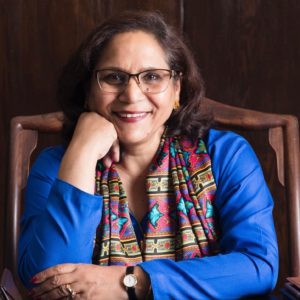
The writer is former ambassador to China & Brussels

